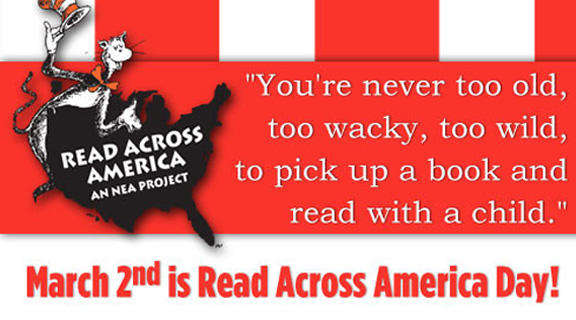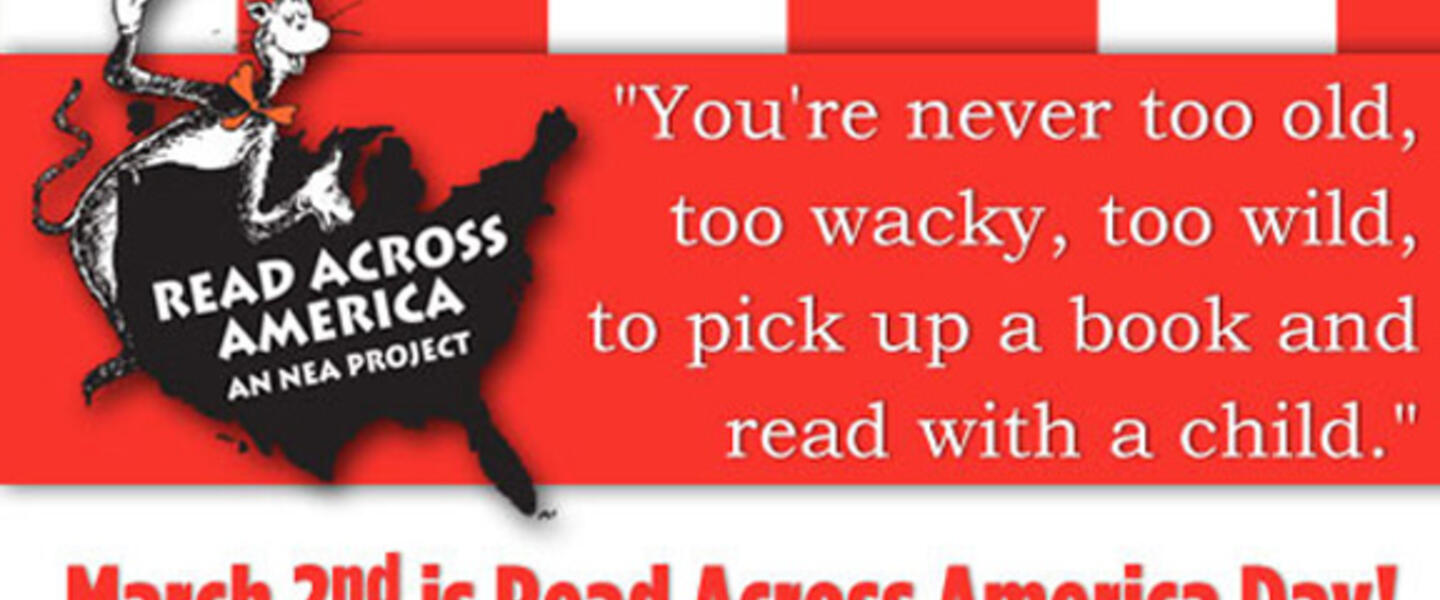
Section Branding
Header Content
Classroom Resources For Read Across America Day
Primary Content

In 1998, the National Education Association (NEA) came up with a brilliant idea - create a day to celebrate reading. The NEA’s idea stemmed from research that shows children who spend more time reading do better in school. Now, the country’s largest celebration of reading is held every year on Dr. Seuss’s birthday, March 2. Last year, the Read Across America event saw 988 pledges for events that took place in all 50 states and 11 locations abroad. To get started, take the pledge and be sure to share your celebration on social media by tagging photos and updates with #readacrossamerica!
Here are 10 ways to celebrate Read Across America Day in your classroom:
1. Sleep Book and Teaching Place Values
As a yawn spreads throughout the land in Dr. Seuss’s Sleep Book, a special machine, The Audio Telly O-Tally O-Count, records the sleepers in the world. The extreme length of the Audio-Telly number may be a good time to have a lesson on teaching place value, such as the place value game here that reinforces the concept through physical movement.
2. Guest Readers
Read Across America is a great time to show children that adults love reading, too! Invite community members or school building leaders into your class to read their favorite Dr. Seuss book to your students. Then, ask the reader to explain to students why he or she holds that book in such high regard.
3. Dr. Seuss City
Read students one of Dr. Seuss’s books. Then explain to students that they will be building their own city similar to those illustrated in Dr. Seuss’s books. Allow students the opportunity to look at the illustrations for inspiration, and then create their own Dr. Seuss city out of recyclable household projects like the one here. To make it more challenging, teachers can require a certain number of acute/obtuse/right angles in the structure (math), have students write a Dr. Seuss story about their city (ELA), or research what would happen to the building materials if they were exposed to natural elements (science).
4. Teaching Rhythm with Mulberry Street
Dr. Seuss’s first book to be published, And to Think That I Saw It on Mulberry Street, is said to be written about his experience riding on a ship returning home from Europe. The repetitive rhythm of the ship’s engine inspired the rhythm of the story. Even the youngest of readers can hear it in the book’s words, which makes it a great book to teach about patterns and rhythms while entertaining the children as only Dr. Seuss can!
5. Bartholomew and the Oobleck Aids in Science
In Dr. Seuss’s book Bartholomew and the Oobleck, a gooey green substance, known as oobleck, fell from the sky and wreaked havoc in the kingdom. This over-the-top tale is the perfect opportunity to discuss the properties of solids and liquids since oobleck is a non-Newtonian fluid—meaning it has properties of both solids and liquids. Use this easy recipe to make oobleck for your students. Watch them discover that although oobleck is runny like a liquid, it will feel like a solid when met with force (like a punch)!
6. The Butter Battle Book
Although this seems like an innocuous story of a war based on toast, The Butter Battle Book is actually a parable about arms races written during the Cold War era. With older children, it may be a fun way to introduce satire in writing and have them create their own ending to this open-ended story. Younger children may simply enjoy the tale at its surface level. For an entertaining and informative science extension, your class can make butter from whipping cream while simultaneously receiving a lesson in phase changes.
7. Dr. Seuss Writing Prompts
Dr. Seuss’s creativity is legendary. It is what captivates audiences both young and old. Use these Dr. Seuss-inspired writing prompts to capture that creativity in your students’ writing!
8. One Fish, Two Fish Graphing Practice
After reading One Fish Two Fish Red Fish Blue Fish, give students a handful of Pepperidge Farm Colored Goldfish. Have students sort the goldfish by color and then graph how many of each fish they have using these free printables. Once students have completed their charts, they can munch on their goldfish for a tasty snack!
9. Oh, the Places You’ll Go! Creative Writing Activity
“Will you succeed? Yes, you will indeed. (98 ¾% guaranteed.),” is perhaps the most popular line from the last book that was published during Dr. Seuss’s lifetime, Oh, the Places You’ll Go! This tale about life’s journey and challenges is sure to entertain the crowd. As a follow-up creative writing assignment, have students create a suitcase out of a paper bag like the one shown here. Then, students can detail where they are going, what they are bringing, and why they will be there.
10. Read Across America Printables
From posters for your classroom to Certificates of Achievement, NEA is giving teachers copious amounts of printable materials to help support Read Across America.
Let us know how you are celebrating #readacrossamerica in your classroom by leaving a comment below.






